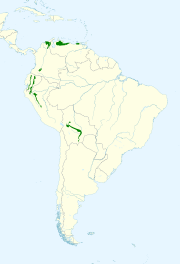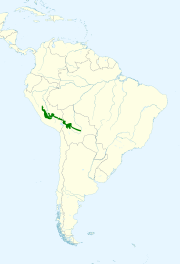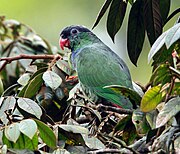Superregnum: Eukaryota
Cladus: Unikonta
Cladus: Opisthokonta
Cladus: Holozoa
Regnum: Animalia
Subregnum: Eumetazoa
Cladus: Bilateria
Cladus: Nephrozoa
Superphylum: Deuterostomia
Phylum: Chordata
Subphylum: Vertebrata
Infraphylum: Gnathostomata
Megaclassis: Osteichthyes
Cladus: Sarcopterygii
Cladus: Rhipidistia
Cladus: Tetrapodomorpha
Cladus: Eotetrapodiformes
Cladus: Elpistostegalia
Superclassis: Tetrapoda
Cladus: Reptiliomorpha
Cladus: Amniota
Classis: Reptilia
Cladus: Eureptilia
Cladus: Romeriida
Subclassis: Diapsida
Cladus: Sauria
Infraclassis: Archosauromorpha
Cladus: Crurotarsi
Divisio: Archosauria
Cladus: Avemetatarsalia
Cladus: Ornithodira
Subtaxon: Dinosauromorpha
Cladus: Dinosauriformes
Cladus: Dracohors
Cladus: Dinosauria
Cladus: Saurischia
Cladus: Eusaurischia
Subordo: Theropoda
Cladus: Neotheropoda
Cladus: Averostra
Cladus: Tetanurae
Cladus: Avetheropoda
Cladus: Coelurosauria
Cladus: Tyrannoraptora
Cladus: Maniraptoromorpha
Cladus: Maniraptoriformes
Cladus: Maniraptora
Cladus: Pennaraptora
Cladus: Paraves
Cladus: Eumaniraptora
Cladus: Avialae
Infraclassis: Aves
Cladus: Avebrevicauda
Cladus: Pygostylia
Cladus: Ornithothoraces
Cladus: Ornithuromorpha
Cladus: Carinatae
Parvclassis: Neornithes
Cohors: Neognathae
Cladus: Neoaves
Cladus: Telluraves
Cladus: Australaves
Ordo: Psittaciformes
Familia: Psittacidae
Subfamilia: Psittacinae
Tribus: Androglossini
Genus: Pionus
Species: P. chalcopterus – P. fuscus – P. maximiliani – P. menstruus – P. senilis – P. seniloides – P. sordidus – P. tumultuosus
Name
Pionus Wagler, 1832
Typus: Psittacus menstruus Linnaeus, 1766 = Pionus menstruus
References
Primary references
Wagler, J.G. 1832. Monographia Psittacorum. pp. 469–750, pl. 22–27 BHL. In: Abhandlungen der Mathematisch-Physikalischen Classe der Koeniglisch Bayerischen Akademie der Wissenschaften 1, München. Tittle page BHL DOI: 10.5962/bhl.title.51953 Reference page. p. 497 BHL
Additional references
Ribas, C.C., Moyle, R.G., Miyaki, C.Y. & Cracraft, J. 2007. The assembly of montane biotas: linking Andean tectonics and climate oscillations to independent regimes of diversification in Pionus parrots. Proceedings Royal Society B 274: 2399-2408. DOI: 10.1098/rspb.2007.0613 Open access Reference page.
Vernacular names
English: Pionus
suomi: Siniaratit
Pionus is a genus of medium-sized parrots native to Mexico, and Central and South America. Characteristic of the genus are the chunky body, bare eye ring (which can vary in color), and short square tail. They are superficially similar to Amazon parrots, but smaller, and in flight their wing-strokes are far deeper. Coloration is generally subdued yet complex compared to member species of the genus Amazona; under bright lighting, their feathers shimmer with iridescent brilliance. All species share bright red undertail coverts; the scientific name of one species, the blue-headed parrot (P. menstruus), refers to this. Males and females are similar, with no notable sexual dimorphism.
Taxonomy
The genus Pionus was introduced in 1832 by the German naturalist Johann Georg Wagler.[1] The name is from Ancient Greek piōn, pionos meaning "fat".[2] The type species was designated as the blue-headed parrot by George Robert Gray in 1840.[3]
A small number of authorities have suggested the blue-headed parrot should be split into two or three species.
The genus contains eight species.[4]
Species
| Common name | Scientific name and subspecies | Range | Size and ecology | IUCN status and estimated population |
|---|---|---|---|---|
| Blue-headed parrot
|
Pionus menstruus (Linnaeus, 1766)
Three subspecies
|
tropical South and Central America |
Size: Mostly green, blue head and neck (also underparts in subspecies reichenowi). Red undertail coverts Habitat: Diet: |
LC |
| Red-billed parrot
|
Pionus sordidus (Linnaeus, 1758)
Six subspecies
|
north-western South America |
Size: Mostly green, chest dull blue, bill bright red. Red undertail coverts Habitat: Diet: |
LC |
|---|
| Scaly-headed parrot
|
Pionus maximiliani (Kuhl, 1820)
Four subspecies
|
eastern and central South America |
Size: Primarily green head feathers that are edged in a royal blue. The chest can be anywhere from royal blue to indigo in color. Wings and back are mainly green, some birdsmay develop bronze 'epilets' on their shoulders. Red undertail/vent area. Feather in this area are tipped with a light green and in some cases aqua or violet. The beak is anywhere from black to horn in color, most birds having a two-tone beak. Skin is usually grey to pink. Habitat: Diet: |
LC |
|---|
| White-crowned parrot
|
Pionus senilis (Spix, 1824) |
Mexico and Central America |
Size: Mostly dark green and dark blue. White forehead and crown and whitish throat. Olive shoulder patch. Light green belly. Red undertail coverts. Males and females may have a pinkish eye ring. Habitat: Diet: |
LC
|
|---|---|---|---|---|
| Plum-crowned parrot
|
Pionus tumultuosus (Tschudi, 1844) |
Andes in South America |
Size: Mostly green with dull bluish-grey neck and red undertail coverts. Head speckled red. Habitat: Diet: |
LC
|
| Bronze-winged parrot
|
Pionus chalcopterus (Fraser, 1841)
Two subspecies
|
north-western South America |
Size: Mostly dark blue with red undertail coverts. Wings dark bronze-green and throat pinkish. Habitat: Diet: |
LC |
| Dusky parrot
|
Pionus fuscus (Müller, 1776) |
north-eastern South America |
Size: Mostly dark brownish-grey, flight feathers blue and undertail coverts red Habitat: Diet: |
LC
|
|---|---|---|---|---|
| White-capped parrot
|
Pionus seniloides (Massena & Souancé, 1854) |
from western Venezuela through Colombia's Eastern Andes and both slopes of the Andes in Ecuador into northwestern Peru. | Size: Habitat: Diet: |
LC
|
Pets
Pionus parrots are regarded as excellent pets, although some species are very rare in captivity. Most commonly kept species are the blue-headed, Maximilian (scaly-headed) and white-capped. Others, such as the dusky and the bronze-winged, have become more common due to captive breeding.
Pionus parrots are quieter than Amazon parrots.[5] Unlike some other companion parrots, aviculturists have noted that they are not particularly energetic, and do not generally enjoy hands-on play (for example, being flipped on their backs), but they do provide companionship and are described as gentle and charming pets.
When excited or frightened, birds of this genus emit a characteristic wheezing or snorting sound that is sometimes mistaken for a sign of distress, or a symptom of disease. They also give off a musky or sweet odor that some caretakers find unpleasant, but others enjoy.
Health
Pionus parrots are susceptible to obesity, vitamin A deficiency and aspergillosis in captivity. These conditions, with the exception of aspergillosis, are easily prevented.
Diet
As a species, the Pionus naturally eats mostly fruits, especially guavas. Pet owners should take care to not feed their bird any high-fat foods. Pet stores often carry banana chips (which are good snacks for many other birds) that are fried in oil to make them crispy, but they contain too much fat for the Pionus and could result in high cholesterol or other health issues related to too much fat intake.[6]
Pionus owners should consult a knowledgeable veterinarian (preferably a South American exotic bird expert) on proper Pionus dietary needs.
References
Wagler, Johann Georg (1832). "Monographia Psittacorum". Abhandlungen der mathematisch-physikalischen Classe, Königlich-Bayerische Akademie der Wissenschaften (in Latin). 1: 463–750 [497].
Jobling, James A. (2010). The Helm Dictionary of Scientific Bird Names. London: Christopher Helm. p. 307. ISBN 978-1-4081-2501-4.
Gray, George Robert (1840). A List of the Genera of Birds : with an Indication of the Typical Species of Each Genus. London: R. and J.E. Taylor. p. 52.
Gill, Frank; Donsker, David; Rasmussen, Pamela, eds. (July 2021). "Parrots, cockatoos". IOC World Bird List Version 11.2. International Ornithologists' Union. Retrieved 16 October 2021.
Alderton, David (2003). The Ultimate Encyclopedia of Caged and Aviary Birds. London, England: Hermes House. p. 228. ISBN 1-84309-164-X.
Stanford, Michael BVSc, MRCVS (2005). "Significance of Cholesterol Assays in the Investigation of Hepatic Lipidosis and Atherosclerosis in Psittacine Birds" (PDF). ICE2005 PROCEEDINGS. www.exoticdvm.com. Retrieved 2013-02-23.
Retrieved from "http://en.wikipedia.org/"
All text is available under the terms of the GNU Free Documentation License





.jpg/180px-Pionus_tumultuosus_69270129_(cropped).jpg)
.jpg/180px-Bronze-winged_Parrot_(Pionus_chalcopterus).jpg)

.jpg/180px-Pionus_seniloides_(cropped).jpg)
